The hidden surface of Titan satellite's life
Upon landing on the imaginary surface of Titan, Saturn's largest satellite, in 2005, the Huygens probe discovered a strange world like ours.
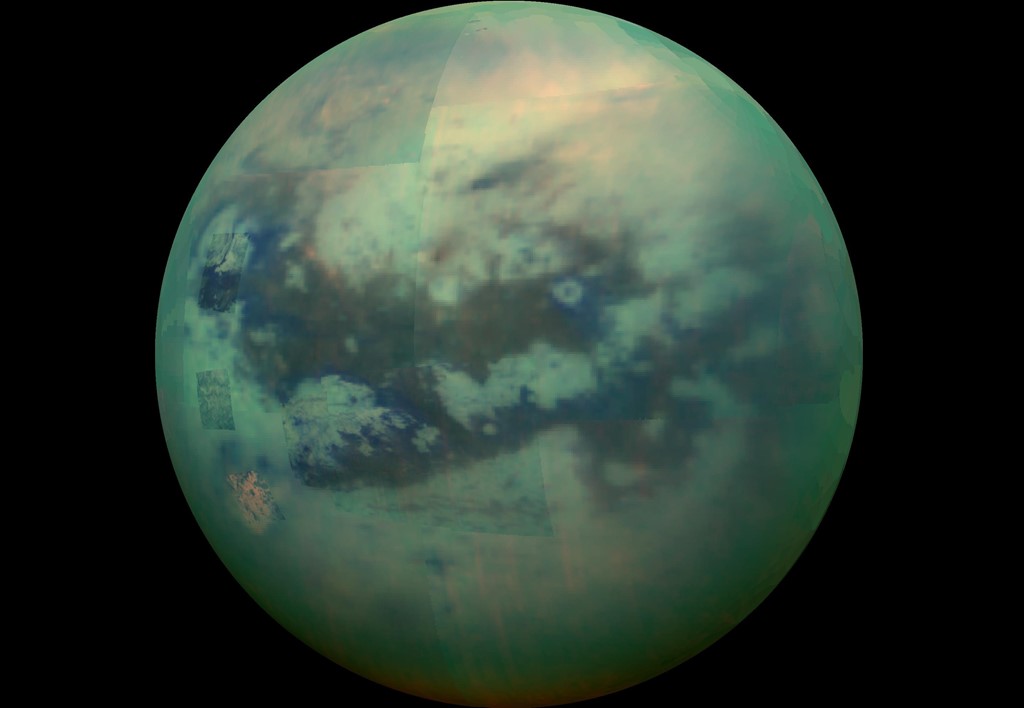 Photographs from the Cassini spacecraft show the surface of Titan through cloud cover.On January 14, 2005, the European Space Agency's (ESA) Huygens probe became the first exploration robot to reach Titan's fuzzy surface to take pictures to Earth.Before the Cassini mother ship disappeared from the horizon, Huygens only had about 1 hour to collect data until the energy was depleted.
Photographs from the Cassini spacecraft show the surface of Titan through cloud cover.On January 14, 2005, the European Space Agency's (ESA) Huygens probe became the first exploration robot to reach Titan's fuzzy surface to take pictures to Earth.Before the Cassini mother ship disappeared from the horizon, Huygens only had about 1 hour to collect data until the energy was depleted.
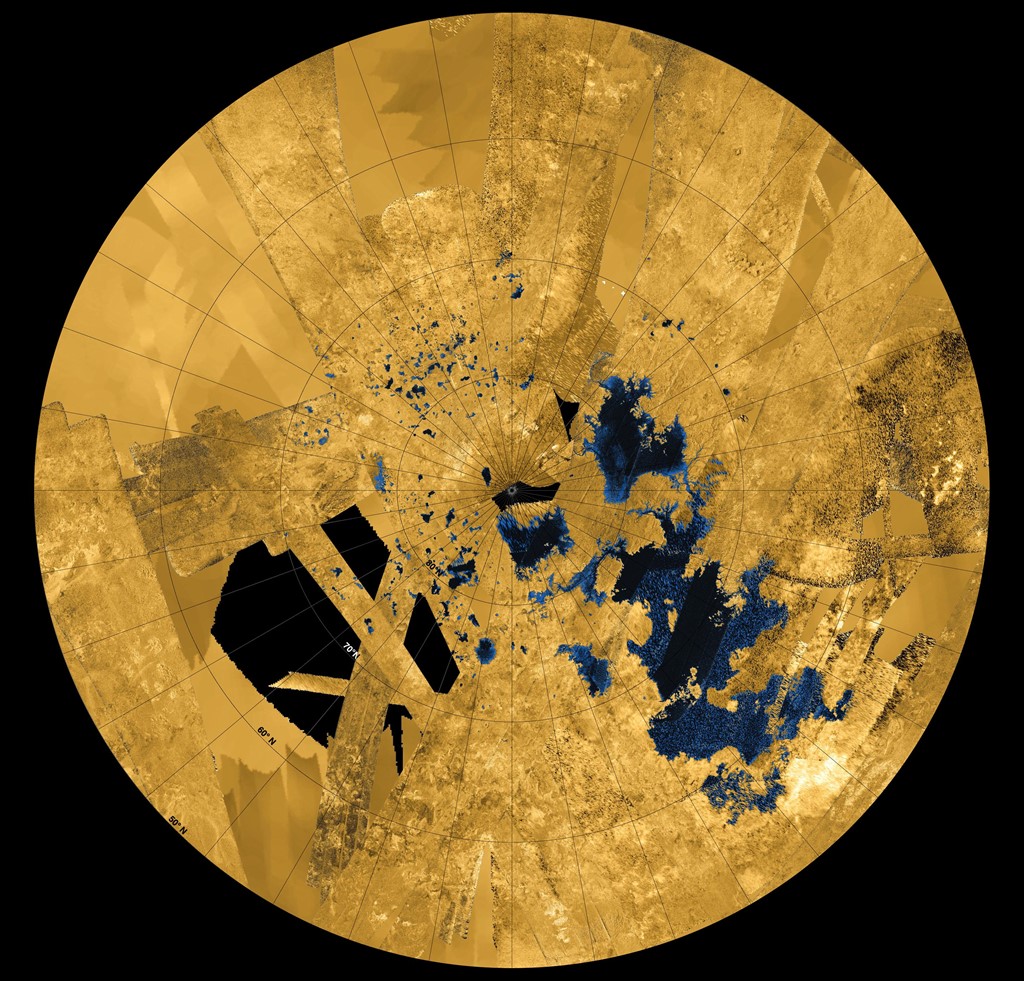
The land is at the north end of Titan with hydrocarbon lakes and sea.About 1.5 billion kilometers from the Sun, Titan has such a low temperature that the ice here is as hard as rock and gases like ethane and methane are liquefied into large lakes and seas.However, with mountains, rain, wind and waves, Titan is more like a planet than a protruding, dry satellite.In addition to sea oil and gas on the surface, Titan also nourishes an ocean containing underground water.This makes it one of the brightest candidates for a search for extraterrestrial life.
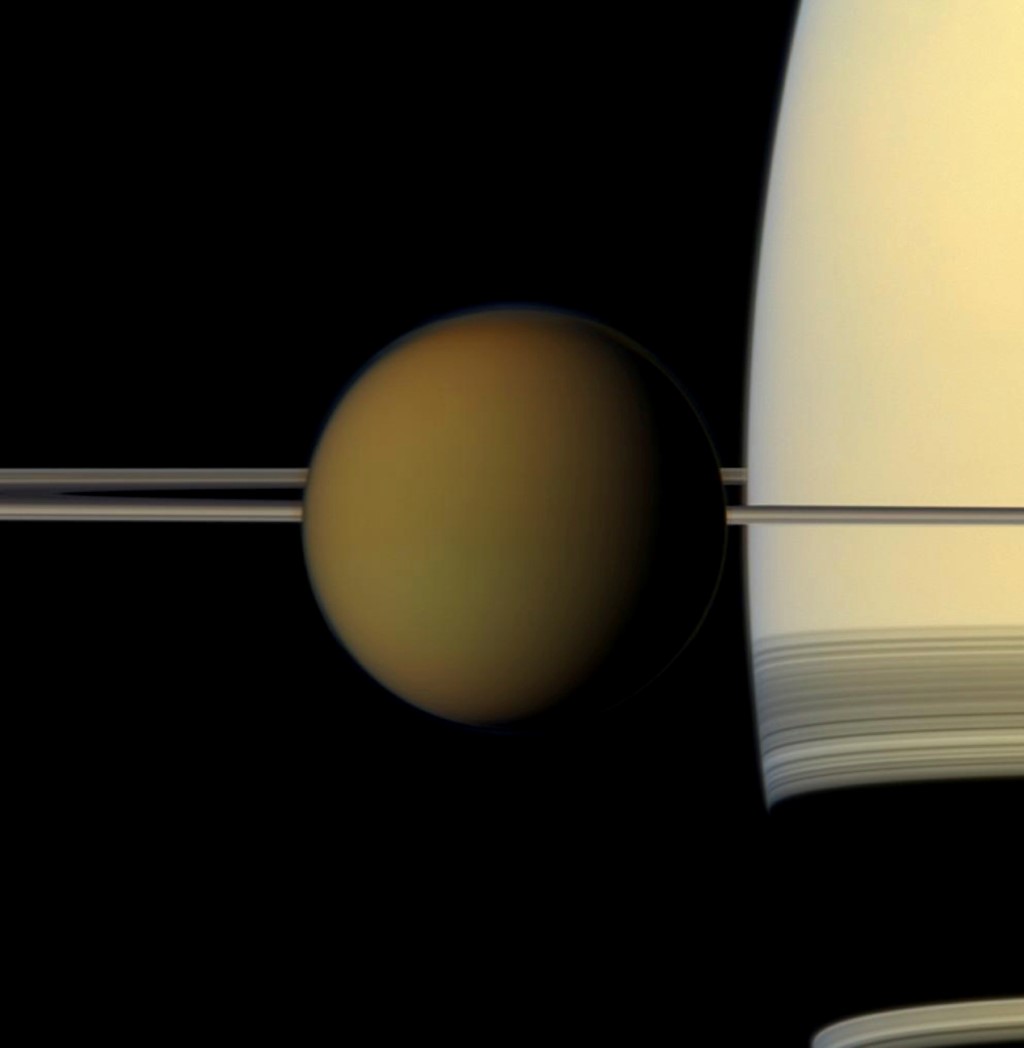
Titan, Saturn's largest satellite, glides through this giant gas and its rings in a color photograph taken by the US Space and Space Agency's Cassini spacecraft.
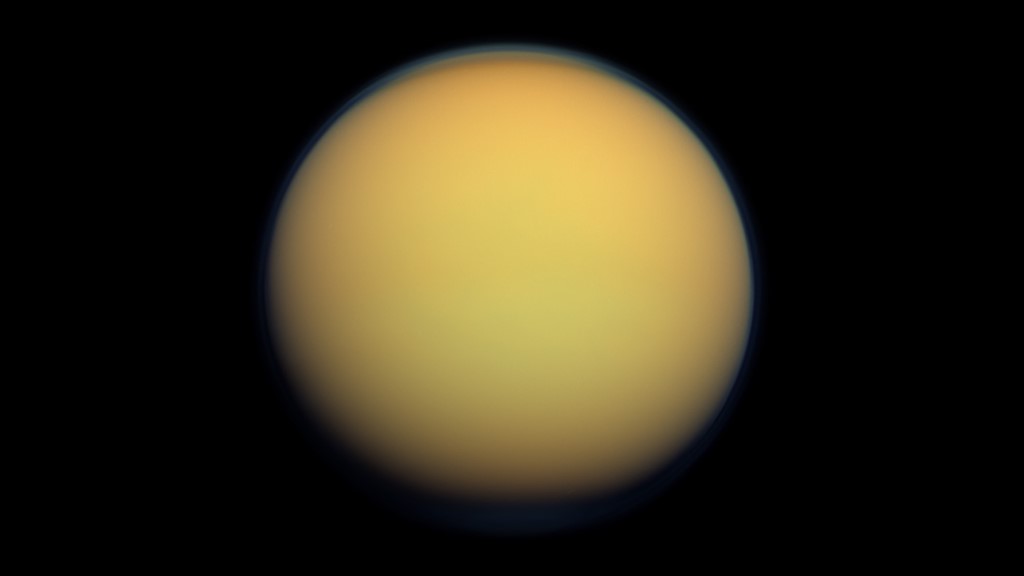
The thick atmosphere obscures the view of Titan's surface.Viewed from the outside, Titan seemed to be covered by a pale orange sky.Titan's atmosphere is primarily composed of nitrogen, quite similar to Earth's atmosphere before life.
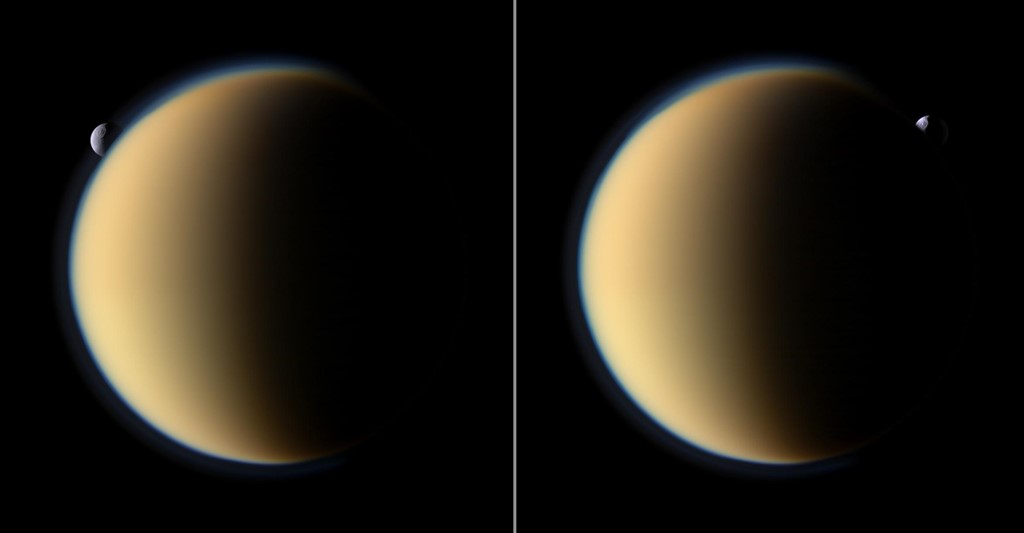
Tethys, one of Saturn's smaller satellites, peeks behind Titan in photographs taken by Cassini.The Huygens mission marks the first and only time humans have taken a spacecraft onto a satellite other than the Moon.With Titan, we discover a new and familiar world.Titan has both similar characteristics to Earth and unlike Earth.Life on Titan, if it existed, could be life as we know it and it could be in a different form that humans never knew.

Titanium surface taken from a distance of nearly 10 km from Huygens probe.After the 20-day journey, Huygens sunk in the Titan satellite's atmosphere for 2 hours before landing on the icy plains with temperatures of about -180 degrees Celsius to collect data.Scientists realized where Huygens landed was not an arid desert.The sand surface here is moistened by some liquid.In addition, there are plateaus, streams and rivers due to the flow of liquid.

Viewed from this photo, Titan is like a jewel suspended over Saturn's belt.Titan, also known as the Saturn VI, has a diameter about 50% larger than the Earth's Moon and has a mass of more than 80%.It is the second largest satellite in the Solar System, behind Jupiter's Ganymede satellite.In terms of diameter, it is even bigger than Mercury even though its weight is only half.Titan was Saturn's first discovered satellite, discovered in 1655 by Dutch astronomer Christiaan Huygens.

Through the fog, Cassini captured the location of Titan's hydrocarbon lakes and glaciers.Humanity will soon greet Cassini, our ambassador on Saturn, later this year after the spacecraft plunges into the harsh surface of Saturn.However, the data Huygens and Cassini collected will continue to provide new clues to the Solar System and help scientists set up future space missions.
- Announcing the first geological map on Saturn's Titan satellite
- Detecting traces of alien life
- The new discovery shook the hypothesis of life on Titan
- Raw materials of life exist on Jupiter satellites
- Detecting signs of life on Saturn satellite
- New computer model about Moon Titan
- Find the river on Saturn's moon
- Summer clouds on Saturn's Titan satellite
- March 25, 1655: Discovering Saturn's largest satellite is Titan
- There is liquid on Saturn's Titan satellite
- Saturn's moon wave is only 1 centimeter tall
- Ocean discovered on two Saturn satellites
 The 11 most unique public toilets in the world
The 11 most unique public toilets in the world Explore the ghost town in Namibia
Explore the ghost town in Namibia Rare historical moments are 'colored', giving us a clearer view of the past
Rare historical moments are 'colored', giving us a clearer view of the past The world famous ghost ship
The world famous ghost ship